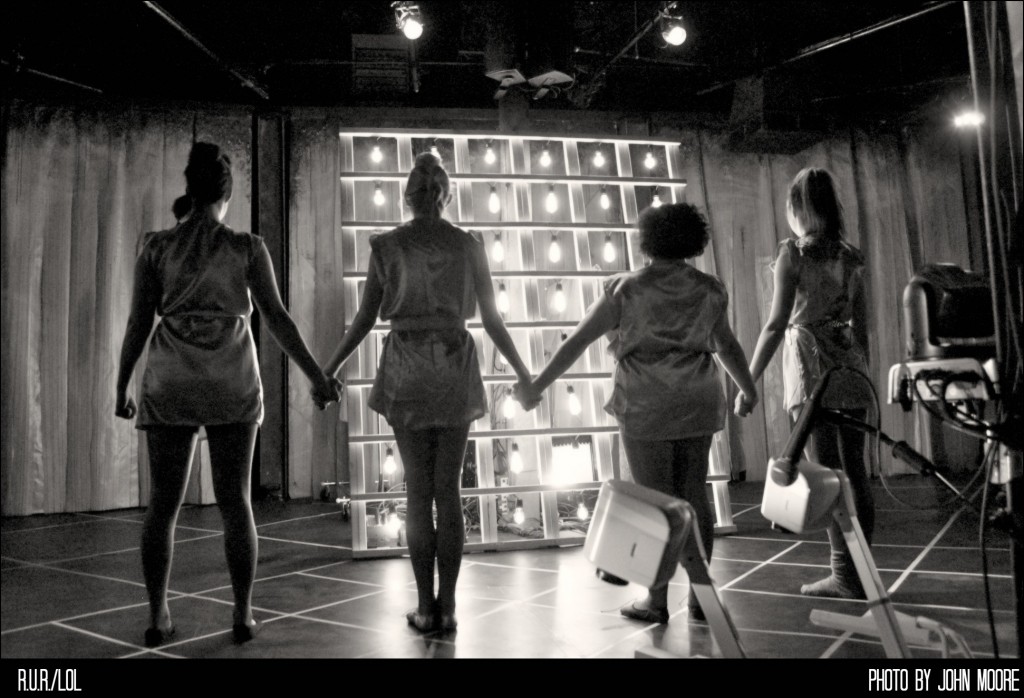By John Moore
Feb. 19, 2013
Opening No. 29: Denver’s oldest and really only true experimental theater company is the LIDA Project. Its newest original work, “R.O.R./lol,” picks up where Czech playwright Karel Capek’s 1920 science-fiction play “Rossum’s Universal Robots” ends. That play is actually where the word “robot” was introduced into the lexicon.
LIDA’s theatrical exploration is set “at the end of humanity,” and it’s up to four deliciously attractive fembots to protect what remains of the planet from catastrophe. I was stuck by the part when the desperate robots consider that perhaps the only way to save the world might be by “creating something new.” (I believe that was the same call to action in the Mark Rothko play “Red”). Capek always used scientific miracles as a means for affirming his faith in human values. But LIDA’s P.O.V. is, not surprisingly … somewhat more cynical (lol).
“R.U.R./lol” marks LIDA’s most ambitious multimedia effort to date, which is saying something. It features 13 live-feed projectors running in real time. The cast includes Laura Lounge, Hart DeRose, Heidi Pachner and Rhea Amos. Directed by Lorenzo Sariñana, who along with David Lafont, Tommy Sheridan, Kenrick Fischer, Dustin Lacy and Brian Freeland, play “Controllers.” Through March 2 at 2701 Lawrence St., 720-221-3821 or the LIDA Project’s home page. All photos by John Moore of www.CultureWest.Org. Thanks to Brian Freeland, cast and crew.
To see the our full photo series, “It’s Opening Night in Colorado Theatre,” featuring one intimate, iconic snapshot from 27 Colorado opening nights (and counting), click here.
Click here to subscribe to the CultureWest.org Monthly E-Newsletter
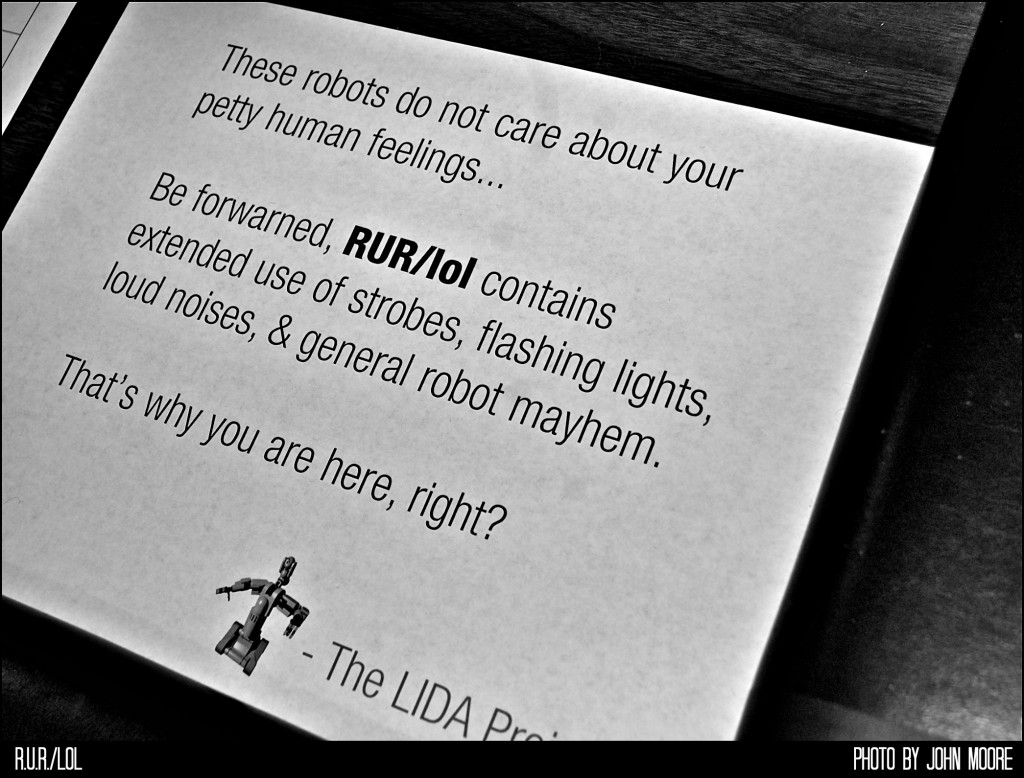
The sign talks a good game, but the robots in the play really do sort of care about your fate, if not your petty feelings.
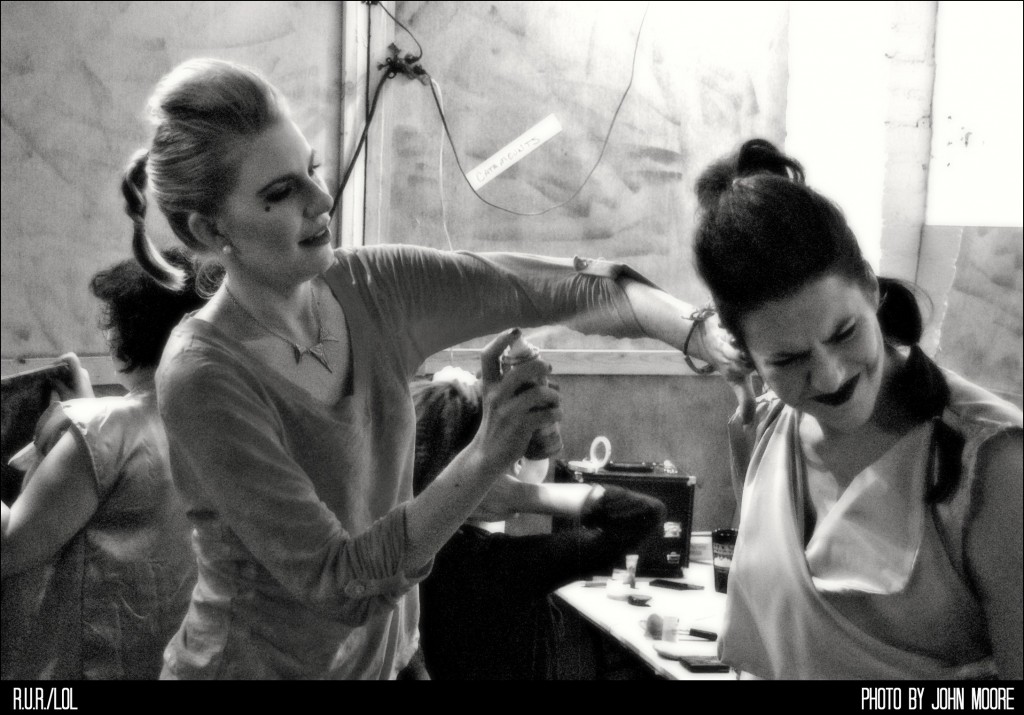
Backstage, actor robot Heidi Pachner helps castmate Lounge with her hairspray.
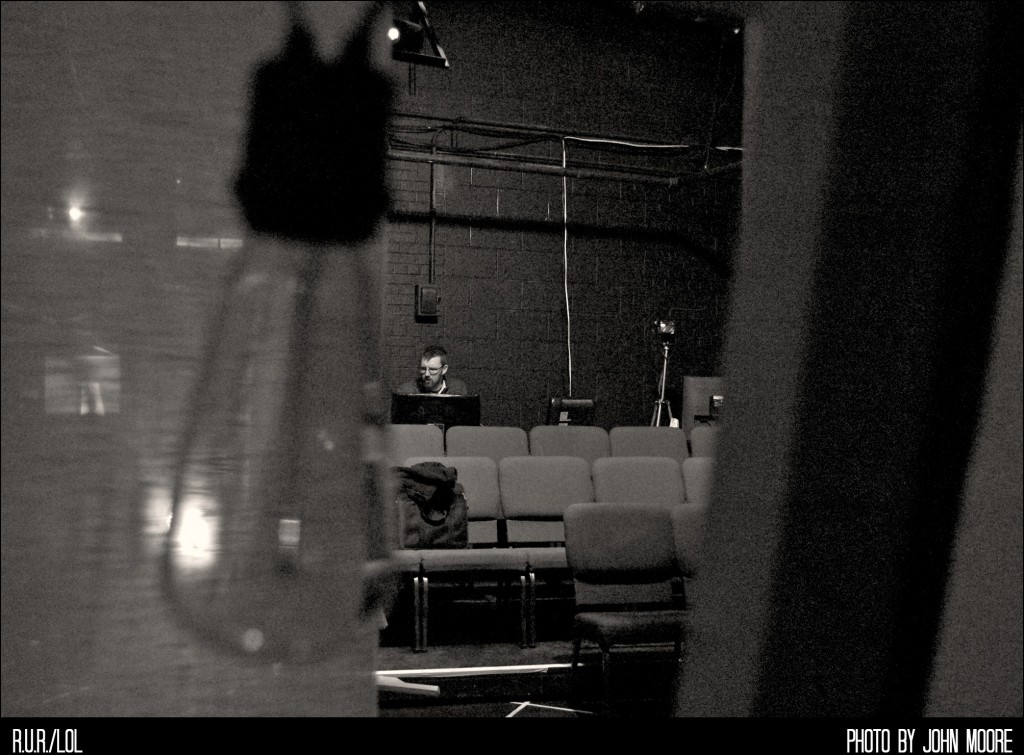
LIDA Project founder Brian Freeland prepares the machinery for one of his most ambitious technical undertakings to date.
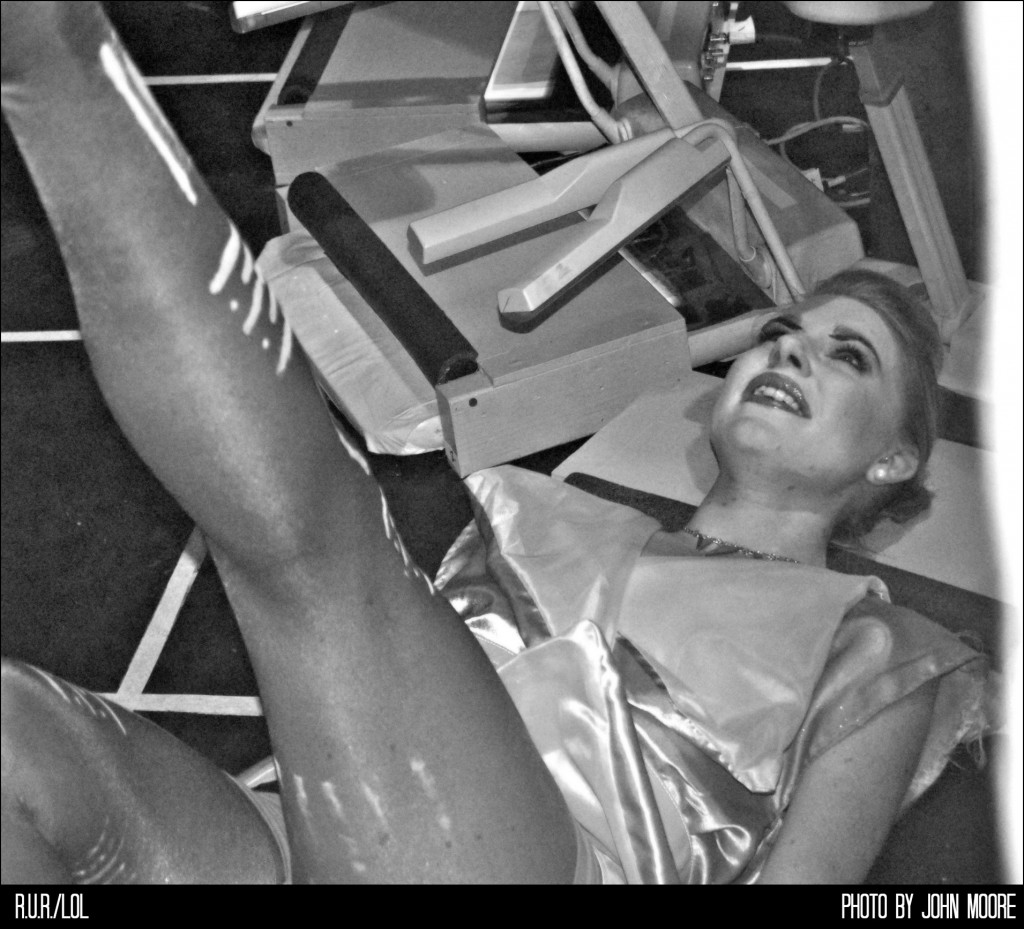
Heidi Pachner gets ready to play. For much of the evening, the women playing the robots lie on their backs, as if docked. They each stare directly into a video camera that allows the audience to consider their enhanced, projected form in a compelling new way.
(Please click below to go to the next page.)

